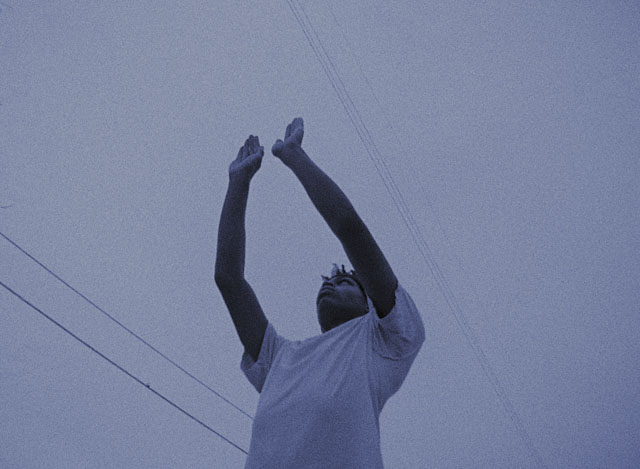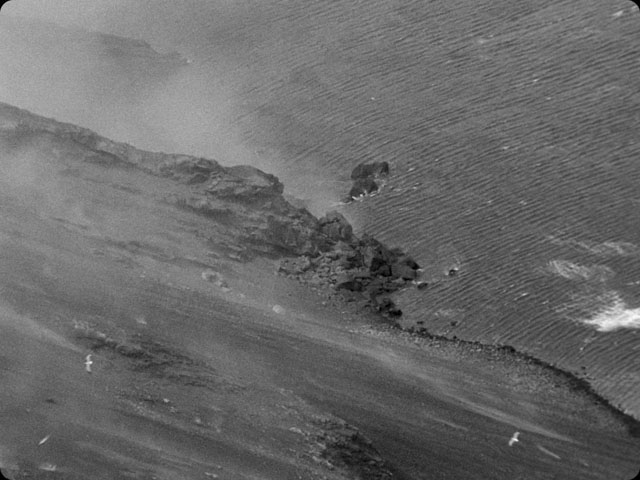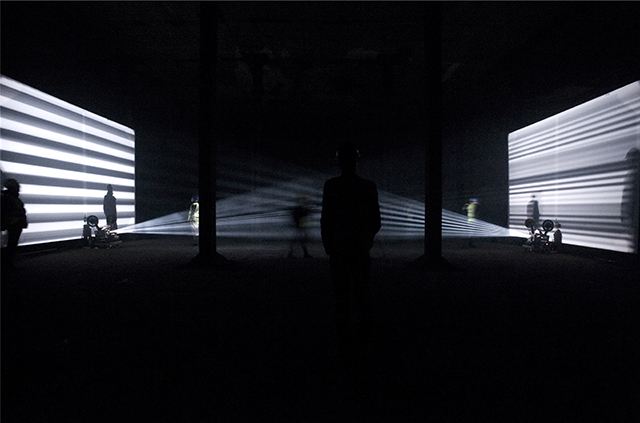Courtisane Festival
Bétonsalon – Centre for Art and Research
invites
Courtisane – festival and platform for film and audiovisual art, Ghent
9, 10 and 11th of December 2021
Since 2002, Courtisane has been organizing a festival in Ghent: its programmation constitutes a kaleidoscopic mosaic of styles, media, gestures, languages and emotions; a patchwork of recent and historical works that share an insatiable hunger for experimentation, a personal signature, and a sense of resistance. This invitation takes the form of a three-day program that brings together short films by Kevin Jerome Everson, several works by Lis Rhodes, as well as films by Annik Leroy, Beatrice Gibson and Nina Menkes.
Program
Thursday, December 9th, at 7 pm :
Kevin Jerome Everson
Material, procedure and process: these three words define the core of artist-filmmaker Kevin Jerome Everson’s artistic practice. It is with this approach, grounded in an early preference for minimalism and a background in sculpture and street photography, that he knows like no other how to evoke the poetics of the lives and experiences of working-class African-American communities.
Living and teaching in Virginia but born and raised in Mansfield, Ohio, as the child of parents who came from Mississippi during the Great Migration, Everson makes films that are inextricably linked to the socio-economic conditions and histories of the Midwest and South of the United States. In over twenty years, he has produced a continuously growing body of work of more than 170 short films and a dozen full-length films, which time and again stand out for their exceptional care for the specificities of place, movement, speech and form.
 Film still from « IFO », Kevin Jerome Everson, 2017. © Picture Palace Pictures
Film still from « IFO », Kevin Jerome Everson, 2017. © Picture Palace Pictures
Kevin Jerome Everson, Eason, 2016, 15’
(with French subtitles)
Part of the one-hundred anniversary of the great Black migration in Philadelphia, Pennsylvania, Eason is loosely based on the life of James Walker Hood Eason (1886-1923) a long-time member of the UNIA of Philadelphia.
Kevin Jerome Everson, Fe26, 2014, 7’
(with French subtitles)
Shot on 16mm in the summer of 2013, Fe26 follows two gentlemen around the East Side of Cleveland, Ohio, and examines the tensions between illegal work — in this case, the stealing of manhole covers and copper piping — and the basic survival tactics that exist in areas of high unemployment.
Kevin Jerome Everson, Sound That, 2014, 12’
(with French subtitles)
Sound That follows employees of the Cleveland Water Department on the hunt for what lies beneath, as they investigate for leaks in the infrastructure in Cuyahoga County, Ohio. The sound invites the viewer/listener into the hollow sounds lurking under Cleveland’s surfaces.
Claudrena N. Harold, Kevin Jerome Everson, Hampton, 2019, 7’
The University of Virginia gospel choir, Black Voices, is returning from a triumphant concert in Hampton Roads.
Kevin Jerome Everson, Music from the Edge of the Allegheny Plateau, 2019, 7’
Rappers and gospel singers, on the streets and in their homes. Everson was inspired by William Klein’s The Little Richard Story (1980), a film that tells the story of the rock-and-roll icon’s life through the eyes and experiences of friends, family, and impersonators.
Kevin Jerome Everson, IFO, 2017, 10’
(with French subtitles)
In Mansfield, Ohio, multiple UFO sightings yield both passionate firsthand accounts and detailed reflections; meanwhile, suburban youths raise their arms toward the heavens in becalmed surrender.
Kevin Jerome Everson, Ears, Nose & Throat, 2016, 10’
(with French subtitles)
A woman’s testimonial faculties are confirmed through medical examinations before she recites a tragic story, whose horrors we don’t see, hear, or smell, but can imagine far too easily.
Kevin Jerome Everson, Recovery, 2020, 10’
An Airman is training to be a pilot at Columbus Air Force Base 14th Flying Training Wing in Columbus, Mississippi.
Friday, December 10th, at 7 pm :
Annik Leroy
Annik Leroy, Tremor, 2017, 92’
Es ist immer Krieg: haunting words borrowed from poet and writer Ingeborg Bachmann provide the subtitle for Annik Leroy’s newest film, TREMOR (2017). But the sentence also brings to bear a sentiment that runs through all of the work of this Brussels-based photographer and filmmaker: a sense of non-reconciliation, of refusing to resign oneself to the violences that permeate our daily lives. Leroy’s films remind us how histories of oppression and injustice keep on haunting the present, how their presence can not only be perceived in the scars ingrained in the physical landscapes that traverse contemporary Europe, but also reverberates in innumerable instances of violence and destruction that slip by with impunity. It’s those barely perceptible, brooding tremors that continually penetrate our everyday lives and interpersonal relationships, which can be felt throughout the films, videos and installations that Leroy has made since 1980; a variety of works that each in their own singular way encapsulate the words of Bachmann: “Here, in this society, there is always war, there’s no war and peace, there is only war.”
followed by a talk with the artist and curator Stefano Miraglia
 Film still from « Tremor », Annik Leroy, 2017. © Auguste Orts Production / Cobra Films
Film still from « Tremor », Annik Leroy, 2017. © Auguste Orts Production / Cobra Films
Saturday, December 11th, at 4 pm :
Lis Rhodes
Introduction by Baptiste Jopeck from the review Les Saisons
Artist and filmmaker Lis Rhodes has been making radical and experimental work that challenges hegemonic narratives and the power structures of language since the 1970s. In doing so, she uses film, sound, drawing, performance, photography, writing and political analysis. Rhodes attended North East London Polytechnic and the Royal College of Art, and later taught at the RCA and the Slade, where she was a tutor for 30 years. A key figure in the early years of the London Film-Makers’ Cooperative (LFMC), where she was the cinema programmer, Rhodes was also a founding member of the feminist film distribution network Circles.
 View of « Light Music », Lis Rhodes, 1975. © Lis Rhodes
View of « Light Music », Lis Rhodes, 1975. © Lis Rhodes
Lis Rhodes, Light Music, 1975, 2x16mm, 25’
Light Music was motivated by the scant attention being paid to women composers in the European tradition. It began as a composition in drawings. In the filming of these drawings — it developed into an orchestration of noise — whereby the intervals between the lines register as differentiated noise or “notes”. The drawings were then filmed using a rostrum camera (a type of camera used to animate still images). The movement of the camera lens — towards or away from the drawings — is heard; as the intervals between lines narrow or widen, so the pitch of sound rises or falls. The image produces sound — that is, the playing of lines is literally “light” music.
Reading of Lis Rhodes’ Whose History by Elsa Brès (French)
Lis Rhodes, Light Reading, 1978, 16mm, 20’
A turning point in Lis Rhode’s filmography, Light Reading is her first voice-over film as well as her first explicitly feminist film. Light Reading inspired a succession of essayistic feminist avant-garde films in Britain ; not long after its completion, Rhodes wrote “Whose History?”, an essential text that confronts the writing of film history for and by men, and more widely the problem of making history.
Lis Rhodes, Running Light, 1996, digital video, 15’
In 1989 as part of research into the state of drinking water supplies, Lis Rhodes and Mary Pat Leece visited West Virginia where open cast mining had polluted the water sources. As they discuss the devastating effects of open-pit mining, they bring up another major problem - that of migrant farmworkers.
Aura Satz, Lis Rhodes, The Warning that Never Was, digital video, 9’
Saturday, December 11th, at 6 pm :
Introduction by Jessica Macor
Beatrice Gibson and Nina Menkes
Beatrice Gibson, Deux sœurs qui ne sont pas sœurs, 2019, 21’
(English, French & Portuguese spoken, English subtitles)
Two sisters (who are not sisters), two pregnancies, a two-seater car, a beauty queen, a poodle. The election of a second fascist — this time in Brazil. A crime thriller without a crime. Based on an original screenplay by Gertrude Stein, written in 1929 as European fascism was gaining momentum, Deux Soeurs is set in contemporary Paris in a moment of comparable social and political unrest. Casting an intimate network of the director’s friends and influences as its principle actors, from renowned New York school poet Alice Notley to educator Diocouda Diaoune and playing on Stein’s interest in autobiography and repetition, Deux Soeurs is simultaneously an abstract thriller and a collective portrait. An exploration of inheritance, responsibility, ethics and futurity.
 Film still from « Deux sœurs qui ne sont pas sœurs », Beatrice Gibson, 2019 © Beatrice Gibson & VG Bild-Kunst
Film still from « Deux sœurs qui ne sont pas sœurs », Beatrice Gibson, 2019 © Beatrice Gibson & VG Bild-Kunst
Nina Menkes, Queen of Diamonds, 1991, 77’
(English spoken, no subtitle)
Queen of Diamonds follows the alienated life of Firdaus (Tinka Menkes), a blackjack dealer in a Las Vegas landscape juxtaposed between glittering casino lights and the deteriorating desert oasis. Negotiating a missing husband and neighbouring domestic violence, Firdaus’ world unfolds as a fragmented but hypnotic interplay between repetition and repressed anger. Shot with a beautiful compositional rigour echoing Chantal Akerman’s Jeanne Dielman, Queen of Diamonds is a remarkable and demanding masterpiece of American independent filmmaking. Heralded as one of the most challenging and subversive filmmakers working today, the re-release of Queen of Diamonds marks the start of a new critical recognition for Menkes’ groundbreaking body of work.
 Film still from « Queen of Diamonds », Nina Menkes, 1991. © Arbelos Films
Film still from « Queen of Diamonds », Nina Menkes, 1991. © Arbelos Films
-
info document (PDF - 3.8 MiB)
Share